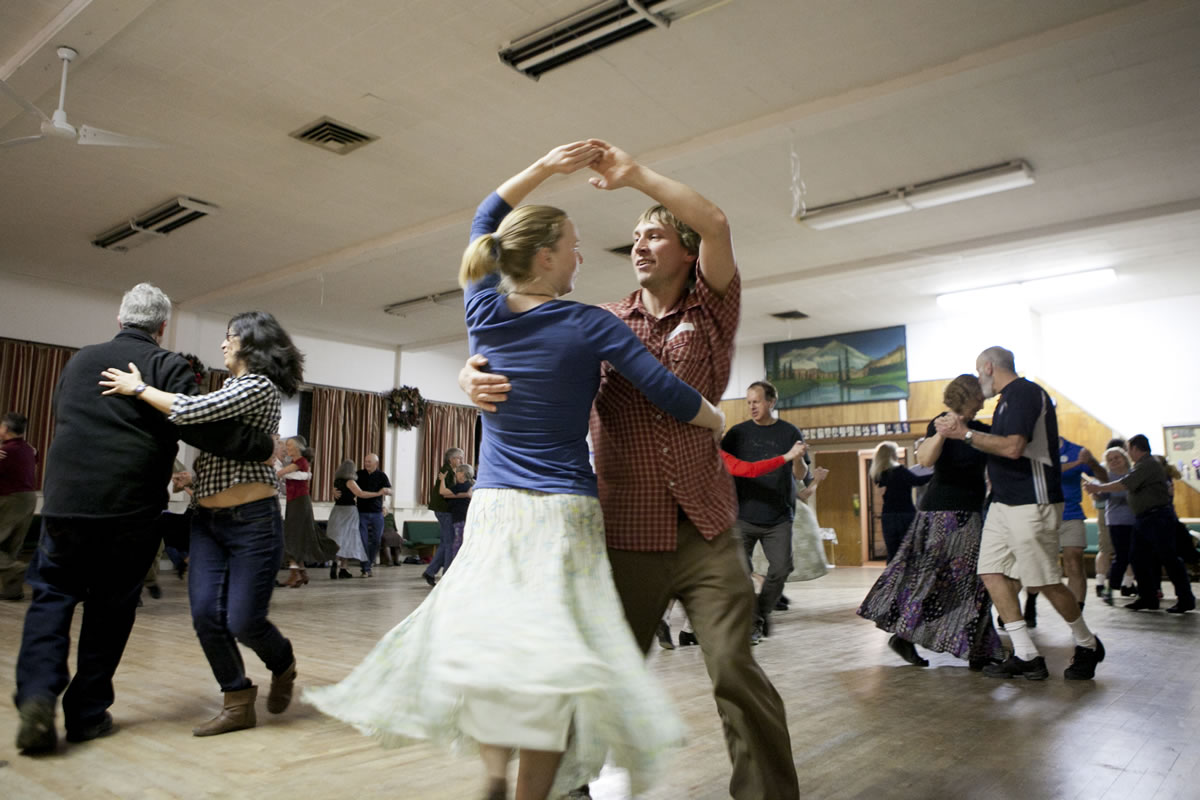Clark County Square Dance Center
Where: 10713 N.E. 117th Ave.
Dances:
o Ballroom dancing with the 16-piece Swing Street Glenn Tadina Band, 8 to 10:30 p.m. the second Friday of the month, $10. Joseph and Julieann Platt lead lessons from 7 to 8 p.m., $5. 503-769-5598 or swingst.com.
o Square dancing, 7:30 p.m. first and third Saturdays, $5. Caller Jim Hattrick leads beginner and mainstream lessons, 6:30 to 9:30 p.m. Mondays, $5. 360-573-5886 or happy-hoppers.com.
o Round dancing lessons with Dorothy Lowder, 3 to 6 p.m. Sundays; $5, first lesson free; 503-232-7544.
Hazel Dell Grange No. 1124
Where: 7500 N.E. Hazel Dell Ave.
Dances:
o Contra, 7:30 to 11 p.m. second Friday of the month; $7, $5 for ages 65 and older and 12 and younger. Free instruction starts at 7:30 p.m.; 360-750-0113 or contra-van-wa.org.




